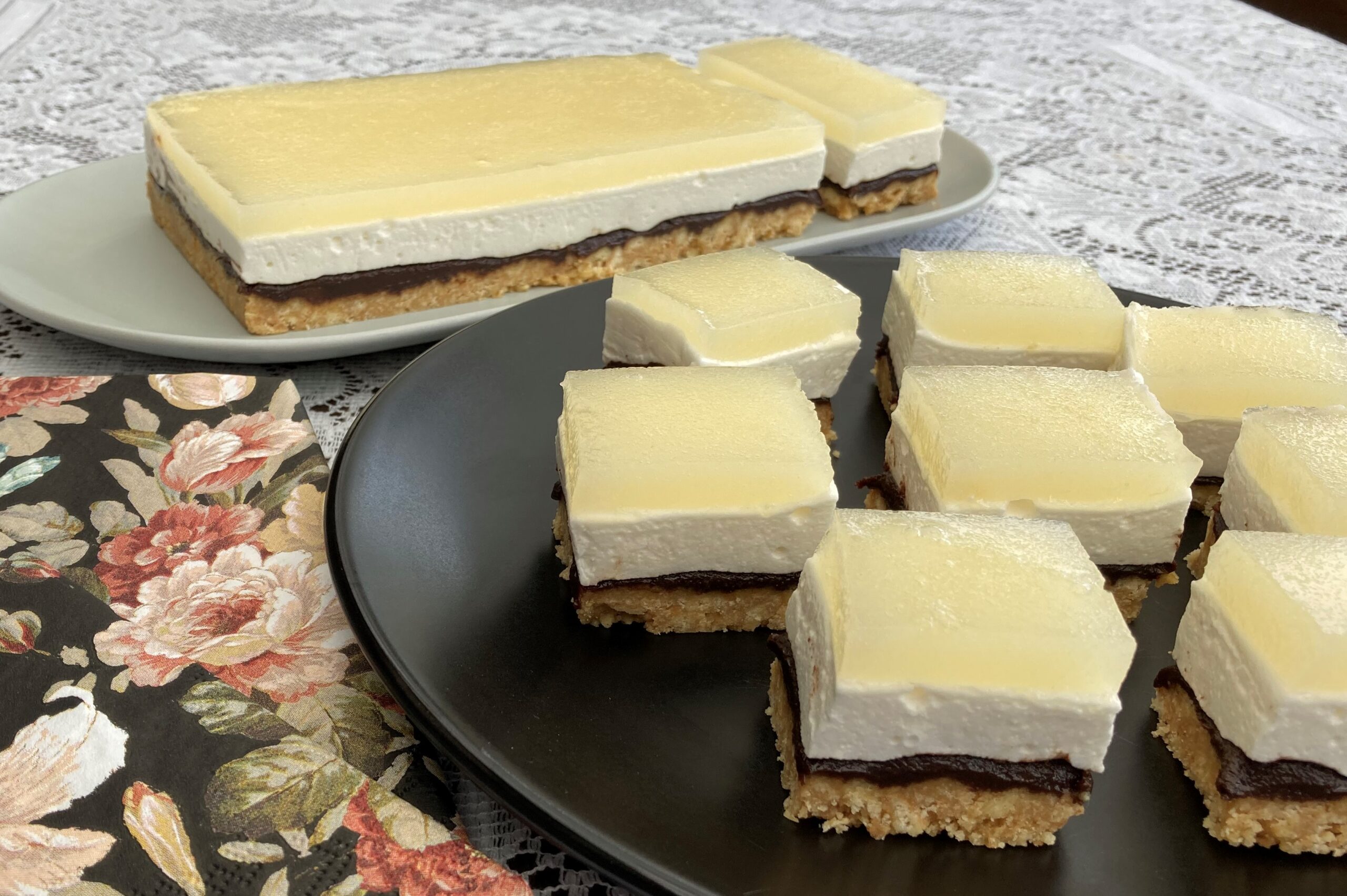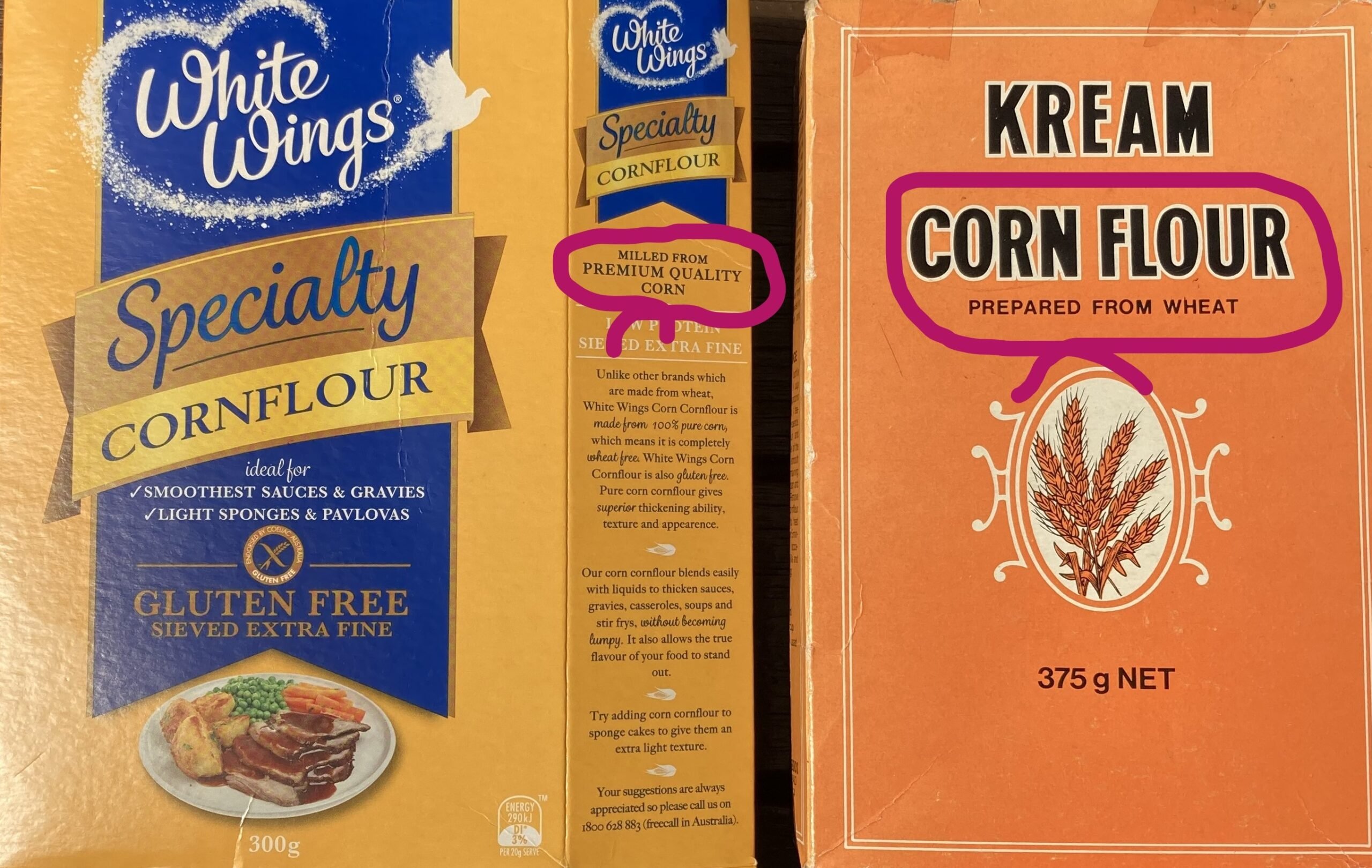Makes ~20 slices
Ingredients:
- 250g “Nice” sweet biscuits
- 150g butter, melted
- 200g Carob spread
- 1/4 cup thickened cream
- 400g white marshmallows
- 2 Tbsp milk
- 5 gelatine sheets
- 150g canned pear
- 250ml pear syrup from the canned pears
Method:
- Grease and line with baking paper a 20cm x 20cm cake pan. Allow the baking paper to overhang, in order to lift the slice out of the pan when set.
- Process or crush the biscuits into fine crumbs. Pour in the melted butter and mix until combined.
- Press the biscuit mixture over the base of the pan and refrigerate for 15 minutes.
- Put the ready-made carob spread and the cream in a suitable bowl to microwave on high for 40 seconds. Stir until smooth and combined.
- Spread evenly over the biscuit base and put back in the fridge for 1 hour.
- If the marshmallows are large, chop them into smaller bits as they will melt faster. Place them with the milk in a bowl and microwave in 20 second intervals. Stir well in between. Repeat until they are fully melted and combined.
- With a spatula, spread the marshmallow mixture evenly over the carob layer and refrigerate for 2 hours.
- Soak the 5 gelatine sheets in cold water for 8 minutes.
- Puree the pears and combine them with 150ml of the canned syrup.
- Place the remaining 100ml of pear syrup in a small saucepan. Squeeze the water from the gelatine sheets and add them to the saucepan. Stir over a low heat for about 30 seconds to melt.
- Away from the heat, add the liquid to the combined puree pear and syrup and whisk well.
- Pour this over the marshmallow layer and allow it to set in the fridge for 4 hours or overnight.
- Slice with a hot knife. Wipe the knife between slices.
Carob spread recipe:- see low chemical, gluten & dairy free, condiments.






